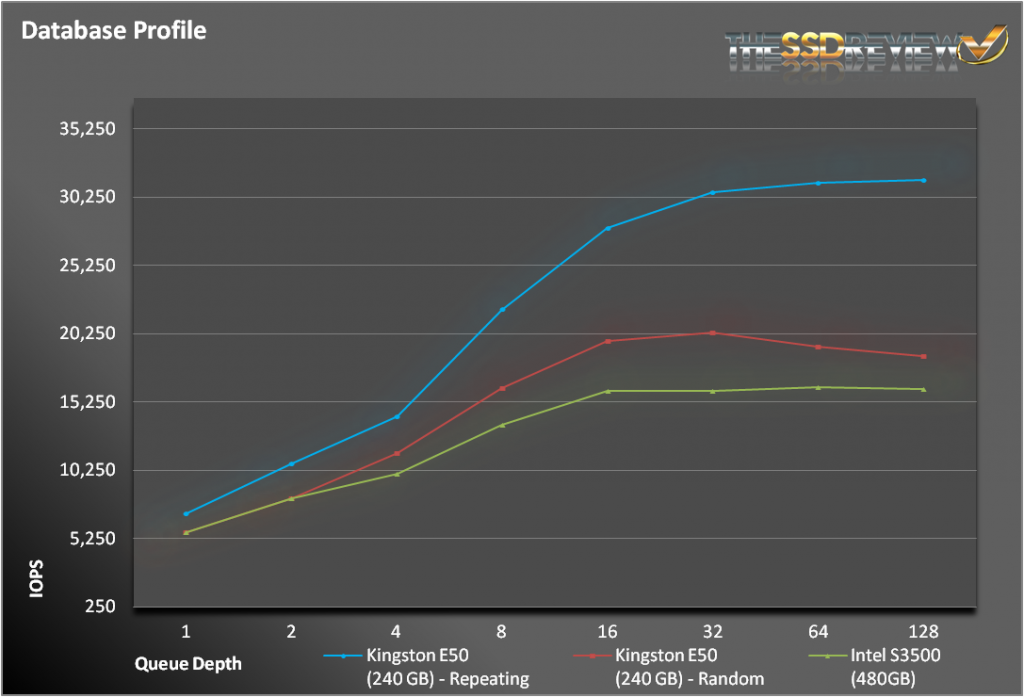SERVER PROFILES
While synthetic workloads do a great job of testing the underlying technology and reporting easy to understand results, they aren’t always indicative of how the drive will be used by the end user. Workloads that simulate enterprise environments try to bridge that gap without being overly complex.
The database profile is 8K transfers, and 67% percent of operations are reads.
With most of our tests complete, it would be pretty easy to guess how our server profile tests would go. This is the reason we perform the tests. Not only did the E50 come out on top for repeating data, it pulled out a win at all queue depths for random data. We were a little shocked when we saw the results. Up to this point, the S3500 was the clear winner on all read tests and all random write tests. Considering our server profiles more closely match real-world performance, it is a good sign for the Kingston drive.
The fileserver profile is based on an 80% read/20% write mix. Its made up of block sizes from 512 to 64K, each making up a different percentage of the access pattern.
The pattern is: 512 bytes=10%, 1k=5%,2k=5%, 4k=60%, 8k=2%, 16k=4%, 32k=4%, 64k=10%.
Once again, the E50 has come out on top. The only thing that we can conclude is that the E50 does a better job at balancing read/write operations than the s3500.
The webserver profile is similar to the fileserver profile, but has some additional 128K and 512K accesses thrown in for good measure. Additionally, the profile is 100% read.
With all read transfers, the webserver profile title goes back to Intel. This is no surprise seeing as the S3500 has a substantial lead in read performance.
REPORT ANALYSIS AND CONCLUSION
Random performance is a mixed bag. Synthetic read performance, across the board, is worst than the competition. Write performance with compressible data is excellent and easily beat the S3500 from Intel. Random data, on the other hand, causes the E50 to trail the S3500 by a wide margin.
But, when our tests turned to mixed workloads in our server profile tests, the E50 held its own when read/writes were involved. The results of the server profiles tests definitely endeared us to the E50, but might have a been a case of “too little, too late”.
While we like the compressible data performance, it just isn’t enough to overcome the random data performance. This is an especially hard sell when the Intel S3500 is being sold below the price of the Kingston E50. What you get with the S3500 is an SSD that gives you consistent performance across all data patterns along with superior read performance. It’s just a better all-around performer.
With that said, if you can guarantee that large portions of your workload is repeating, which LSI SandForce has always argued for, than you might want to consider the Kingston E50. If you need the best read performance or an SSD capable of handling all types of data, you might want to keep looking.
 The SSD Review The Worlds Dedicated SSD Education and Review Resource |
The SSD Review The Worlds Dedicated SSD Education and Review Resource | 


But what will the internal components be 6 months from now?
Hi, i did’nt understood the difference between the both SNIA’s test. The description of both is the same but the results are different. Thanks for attention.